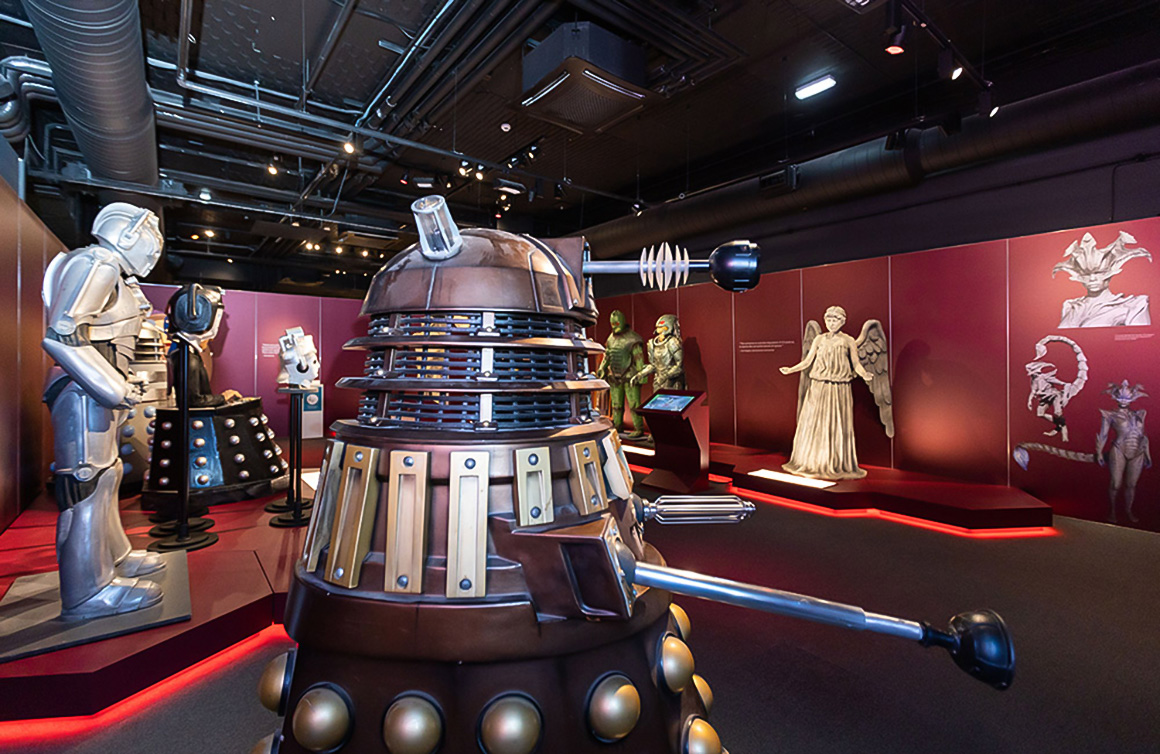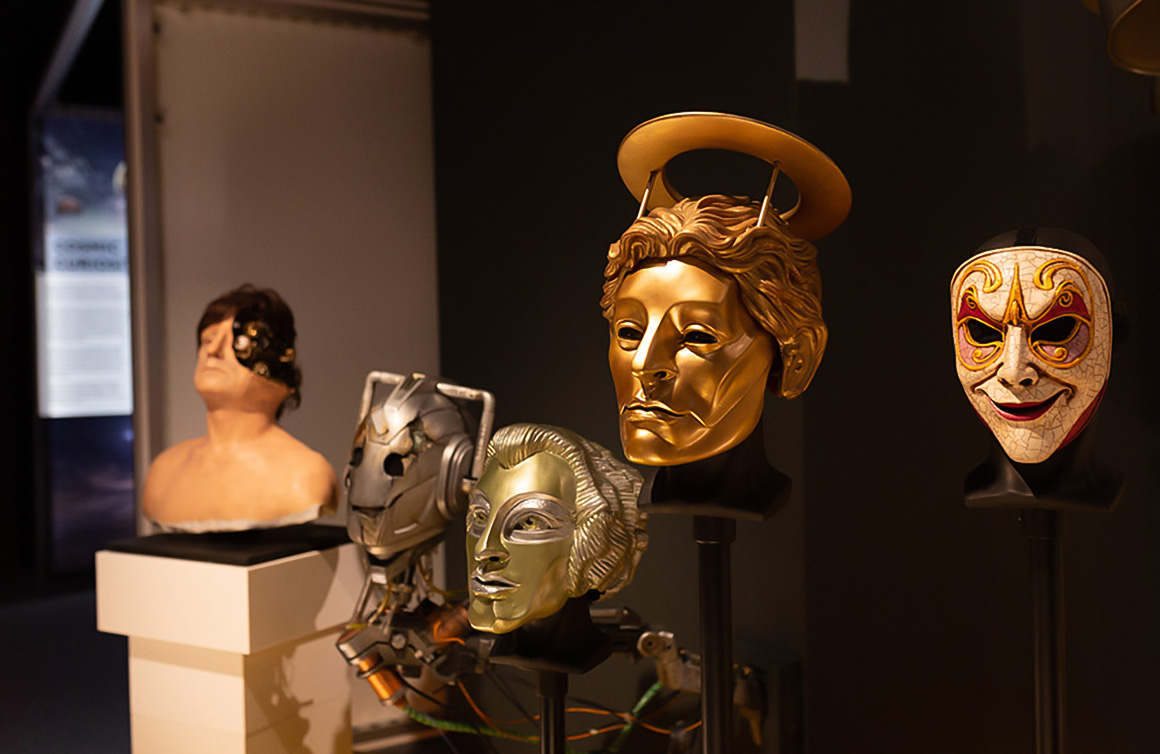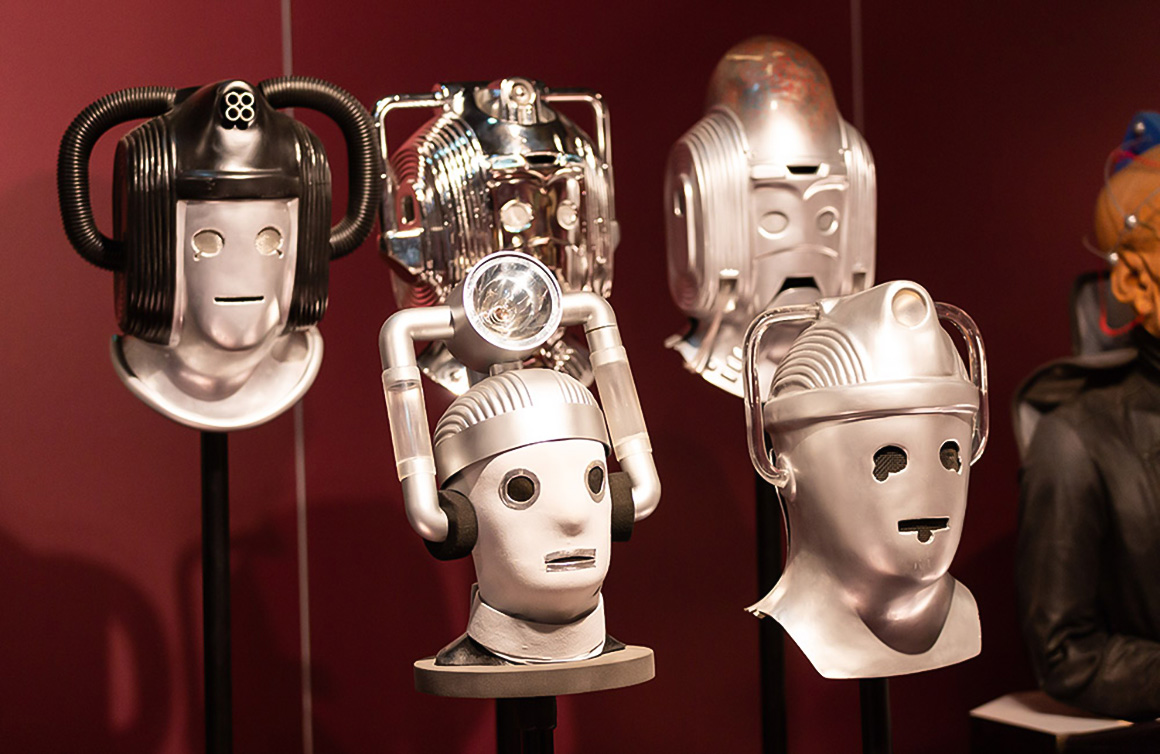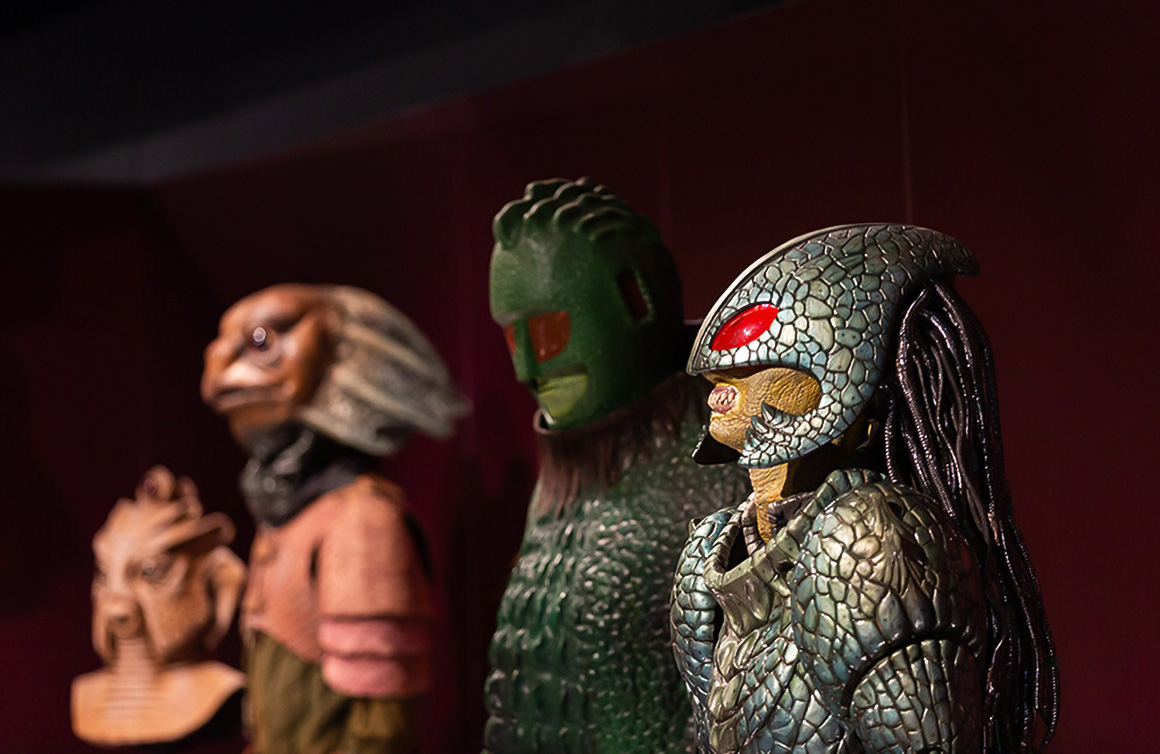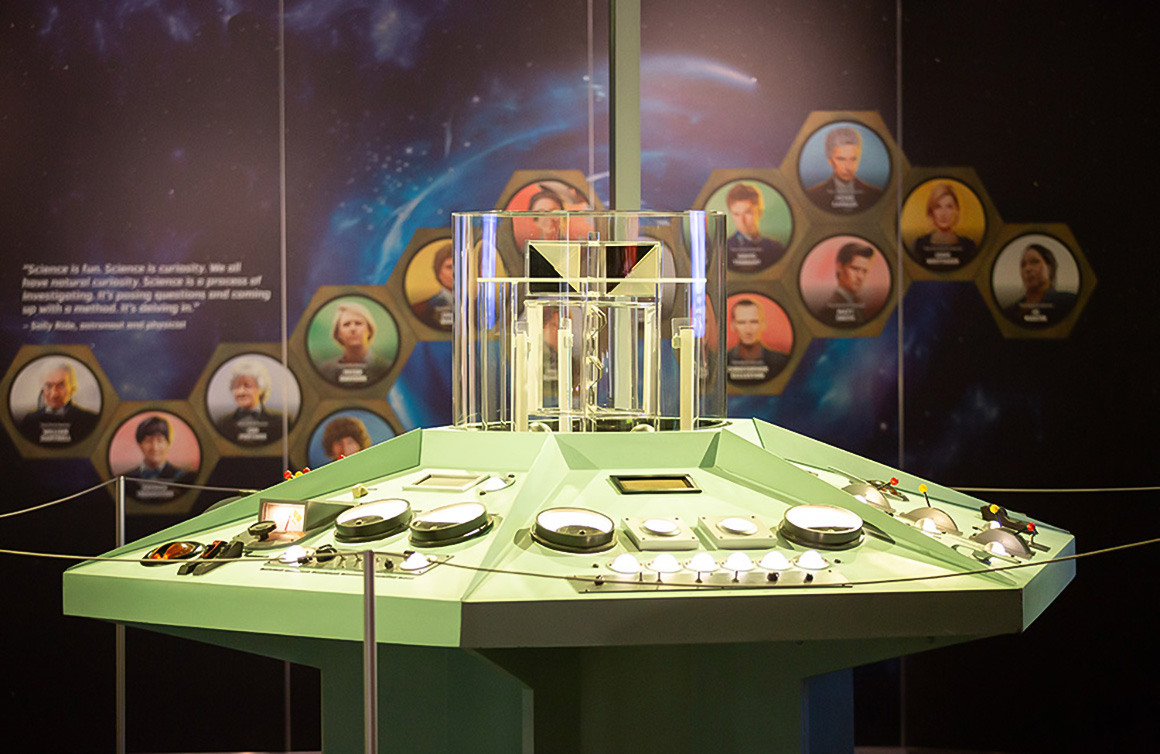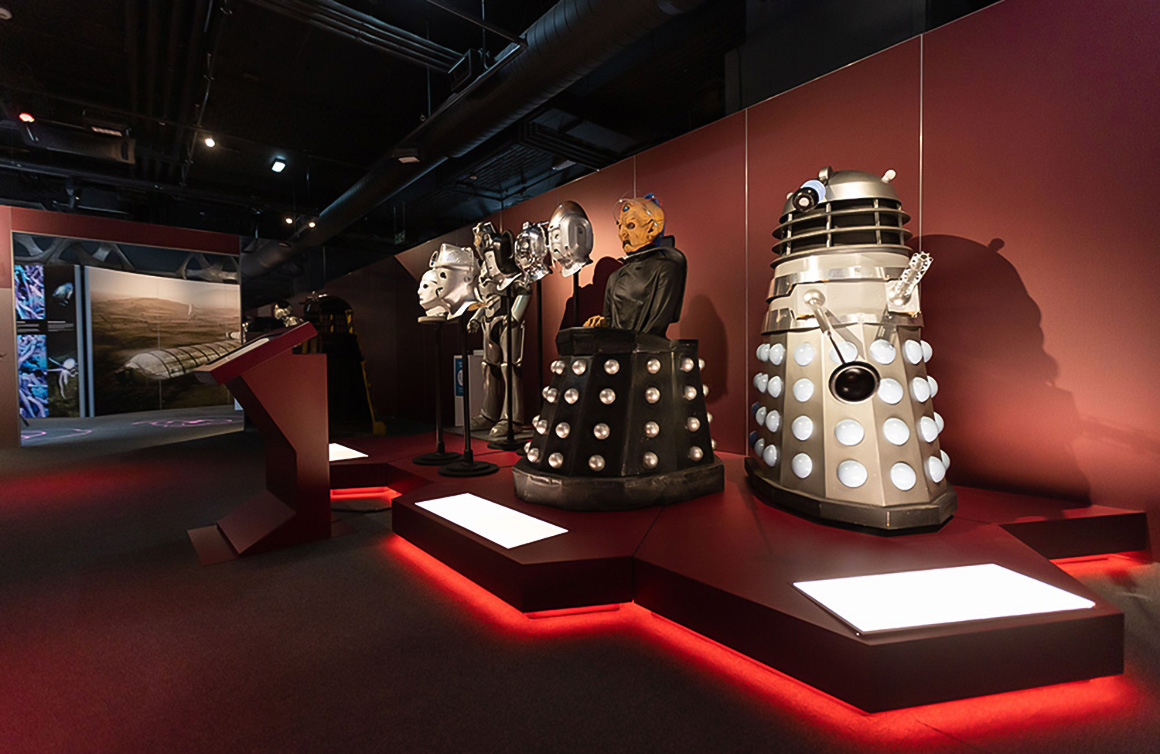Tell us about your role at Sarner.
I’m a freelance writer and curator for Sarner. I created all of the narrative content for the Doctor Who Worlds of Wonder exhibition, which is a partnership between Sarner and the BBC. They previously produced the Doctor Who Experience that ran in London and Cardiff for a number of years. Worlds of Wonder is a new take on the Doctor Who Experience. That’s the genesis of it.
As a Doctor Who fan, I’d worked with Sarner before. When they asked if I was interested I immediately dropped what I was doing and said yes to this project. It’s one of those opportunities where all the stars aligned, really. It was wonderful to work on.
I worked in the museum sector in London for many years. I was at the Natural History Museum for about 15 years. For the last 10 years, I’ve been a freelance writer and I work across heritage and culture attractions. I do a bit of publishing as well.
Sarner is an interesting company because they span the heritage and culture sector, but they also do big theme parks and quite filmic immersive experiences as well. They’ve been in business for over 50 years — they’re really experienced. They have a trusted relationship with the BBC, so they are the ideal partner to work on the new Doctor Who projects.

Doctor Who premiered in 1963 and is now the world’s longest-running science fiction television series. Where does one start when curating an exhibit with such a rich legacy?
That is a good question because it’s an enormous scope.
From the very first conversation I had with Sarner, I knew the exhibit had to be about the entirety of the show’s history and not just the rebooted version of the show since 2005. I instinctively felt that we had to show stuff from all eras of Doctor Who to really capture that story about science and how it inspired storylines so visitors can get the long view. Of course, the challenge is working a half-century of television into one exhibition space.
I think the thread that runs throughout the exhibition is that the show was inspired by ideas of technology and science that were knocking around, in particular in the 1960s and ’70s, and the new branches of science that were emerging. It takes those ideas and runs with it in a fantasy context, but also, it sometimes accidentally predicts things that are going to happen a few decades down the line. For me, the challenge was this: there’s so much potential scope in looking at that half-century through the lens of science and technology. There’s such an enormous amount of content that could be used.
A good guide for me was starting with the objects that the BBC actually had in their prop store for Doctor Who that we could use to anchor different themes and exhibits. That really helped set the path for what we knew we could cover and what we would have to leave out because there wasn’t space. That was a tough decision. You’re always going to miss somebody’s favourite, aren’t you? I don’t think you can please all the people all the time. I’ll be honest with you, I was probably just pleasing myself, and that’s why it was really important to have the classic series as well as the new series.
It’s almost like a love letter to the history of the program.

The exhibition is divided into eight unique sections. Give us a brief overview of what visitors will experience.
It’s more or less eight sections — it gets slightly reconfigured depending on the size and the layout of the venue.
It’s divided into two distinct halves. The first half looks more at the TARDIS, technology, gadgets, and space science. The second half is more about biological science and how nature and the earth sciences have inspired things you’ve seen in Doctor Who — monsters, alien planets, characters, and things like that.
We wanted to start with a bang as people enter the exhibit, so you see the replica of the original TARDIS console from the ’60s that was made for the 50th anniversary. This version of the console was used first in the spin-off drama created by Mark Gatiss, who’s not only written for and appeared in Doctor Who, he’s also our on-screen narrator in the exhibition. They built the console to replicate the William Hartnell one. It proved so popular with fans that it then got used in a number of episodes of Doctor Who itself. We managed to get our hands on that, and it’s the centrepiece as you walk into the exhibition.
Off of that, we look at how the TARDIS console design has changed over the years. It’s fundamentally remained the same, but the different incarnations take their cues from things in the natural world or aspects of science, like the Hadron Collider. I wanted to show people a little bit of the behind-the-scenes thought process that goes into the redesigns. And, it’s about to get redesigned yet again so there will be a new story to tell in a couple of years.
As the exhibit tours internationally over the next five or so years — hopefully we’ll come to North America as part of the tour — we’ll need to do exactly that — we will need to add new exhibits and different pieces of content as the show moves into a really exciting era. The exhibit will reflect those changes and stay fresh.
Because there have been a number of previous Doctor Who exhibitions, we wanted to make sure that we included some things that have never before been seen publicly. That includes a few of the costumes and monsters from the Jodie Whittaker era. That approach is something we want to carry on doing as the exhibit travels to different locations. We want to add and augment elements — swap things in and out so there will always be something new for people.
In fact, just before we opened in Edinburgh, we had access to David Tennant’s next costume when he plays the fourteenth Doctor this November. That’s now on display in the foyer. We have Donna Noble’s costume from shows that haven’t been broadcast yet. It was a nice last-minute coup to get access to those.
The science and technology narrative drives the exhibition, but it really is a celebration of why people love Doctor Who.

Technology plays a central role in the series. What technologies were featured in Doctor Who that were predictive of today’s innovations?
That’s one of the wonderful things about delving back into the classic series, there are all these elements that jump out at you.
Even back in the William Hartnell era (1963-1966), they talked about artificial intelligence and the advent of the Internet. There’s a Doctor Who story called The War Machines from 1966 that looks into the perils of artificial intelligence. And, the Cybermen were one of the most popular foes that stayed the course as well. A real scientist contributed to the genesis of the Cybermen. Dr. Kit Pedler was fascinated with where cybernetics was going. They did that usual thing of asking “what if?”: What does it look like at the extreme end of this, that loss of humanity? That resulted in Cybermen, which appeared for the first time in 1966 when cybernetics was in its infancy. Now, it’s a massive area of growth in science and the medical field.
That’s one of the things I really wanted to cover in the exhibition. We’re entering a new golden age of exploration in space with probes and satellites. They’re able to get further and bring back more information. Our understanding is changing quite fast about various aspects of the cosmos. I think it’s nice that you can see that kind of change in understanding reflected through the show’s history. What we thought was accurate in the 1970s about planet surfaces we now know is not the case. It evolves as it goes along. It’s really nice to see things like the idea of black holes being explored by Doctor Who writers when the idea of a black hole was still in its infancy in the ’70s. They came up with a character who actually exists inside a black hole. That character became Omega, who was really important in defining what we understand about time and time travel. They took that scientific fact and just ran with it.
That story leaps out for me because we do have the Omega costume in the exhibition, the second incarnation from the Peter Davison era in the 1980s. We anchor the content about black holes with that character’s costume.

What do you hope people take away from their visit to Doctor Who Worlds of Wonder?
First and foremost, to really enjoy and celebrate Doctor Who.
To appreciate the sheer scope and the scale of how science has influenced ideas in the program since 1963. In particular, I feel that Doctor Who never got enough credit for the way it explored environmental science. It was really ahead of the pack in looking at the dangers of pesticides, for example. There was a William Hartnell storyline about that two years after Rachel Carson published Silent Spring talking about the dangers of pesticides.
In the Jon Pertwee era of the early 1970s, there were several eco storylines that reflected increasing concerns about what we were doing to the planet — global warming, pandemics — all those kinds of things were featured in the show over the years. It’s not just escapist fantasy — there are some serious points to be made underneath the surface.
It was important to me that you don’t have to be a Doctor Who fan to enjoy the exhibit. It shouldn’t feel like an exclusive club for fans that know all the details. It is accessible and welcoming to general visitors as well. That’s been really nice feedback we’ve had from the two venues in the United Kingdom that have hosted the exhibit: families and older members of the family have spent ages in the exhibition just really enjoying exploring it and getting to know things that they weren’t necessarily that familiar with. I do like to think it’s inclusive and accessible for a far wider variety of people than just the fans.

The series has been available to North American audiences since 1965 but HBO picked it up for its streaming service in 2020. How did that affect the show’s production?
I think you can see how, as the show has become more popular in international markets, it’s been given a greater budget. It’s still not a huge budget compared to a lot of commercial operations, but you can tell it has become more sophisticated and glossy over the years. With the Disney partnership for the new incarnation, it should take a leap yet again.
I think it’s important to stay true to the core principles of the show and why people love it. It should feel approachable, a bit homespun, and it not mind laughing at itself at times. You’re in on the joke. Those are important core parts of Doctor Who‘s DNA. It’s not just a question of throwing more money at something, it has to retain those core ingredients that are the Doctor Who experience.

Doctor Who Worlds of Wonder shows at the National Museum of Scotland until May 1, 2023.


